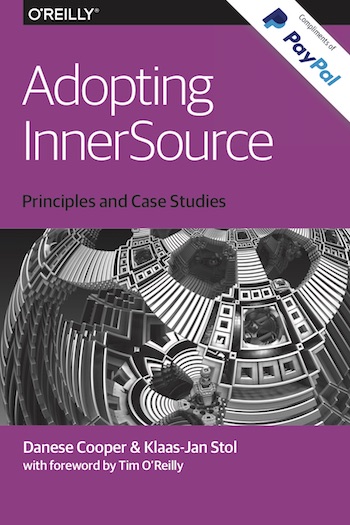Insights from Adopting InnerSource
"Adopting InnerSource: Principles and Case Studies" by Danese Cooper and Klaas-Jan Stol explores how companies can leverage the principles of open-source software development within their own organisations. InnerSource adapts the collaborative, transparent, and community-driven practices of open-source to a corporate environment, fostering innovation and efficiency. This book presents various case studies from companies that have successfully adopted InnerSource, providing practical insights and lessons learned.

Adopting InnerSource free download
Summary
Chapter 1: The InnerSource Approach to Innovation and Software Development
The first chapter introduces InnerSource as a strategy that enables developers to contribute across team boundaries, promoting transparency and collaboration. It traces the evolution from closed, hierarchical models to more open and flexible ones, drawing parallels with the open-source movement. InnerSource is described as not only a set of practices but also a philosophy that empowers employees and enhances organisational agility.
Chapter 2: The Apache Way and InnerSource
This chapter, contributed by Jim Jagielski, co-founder of the Apache Software Foundation, outlines the core principles of "The Apache Way" meritocracy, transparency, and community. These principles have been pivotal in the success of open-source projects and serve as a foundation for InnerSource. By prioritising community health and transparent decision-making, organisations can foster a more inclusive and productive environment.
Chapter 3: From Corporate Open Source to InnerSource: A Serendipitous Journey at Bell Laboratories
Vijay K. Gurbani and his co-authors recount the adoption of InnerSource at Bell Laboratories during the development of the Session Initiation Protocol (SIP). The chapter highlights how Bell Labs leveraged open-source principles to foster innovation and collaboration across different teams, ultimately contributing to the development of VoIP technologies.
Chapter 4: Living in a BIOSphere at Robert Bosch
Georg Grütter, Diogo Fregonese, and Jason Zink share Bosch's journey towards adopting InnerSource through the Bosch Internal Open Source (BIOS) programme. The chapter details the initial challenges, success stories, and the cultural shift required to implement InnerSource in a traditional R&D environment.
Chapter 5: Checking Out InnerSource at PayPal
This chapter discusses PayPal's adoption of InnerSource under the leadership of Danese Cooper. PayPal ran multiple experiments to evaluate process improvements and foster a culture of collaboration. The case study provides insights into the strategies used to overcome resistance and integrate InnerSource practices into the company's development workflow.
Chapter 6: Borrowing Open Source Practices at Europace
Isabel Drost-Fromm describes Europace's efforts to implement InnerSource in a medium-sized financial services company. The chapter explores the steps taken to introduce self-organising teams and enhance collaboration, as well as the challenges faced and lessons learned along the way.
Chapter 7: Connecting Teams with InnerSource at Ericsson
John Landy presents Ericsson's Community Developed Software (CDS) programme, which aimed to promote collaboration and reduce bottlenecks in software development. The chapter highlights the importance of platform-based architecture and community-driven development in achieving successful InnerSource adoption.
Chapter 8: Adopting InnerSource
The final chapter offers practical guidelines for organisations looking to implement InnerSource. It summarises common patterns observed in the case studies and provides advice on structuring initial experiments, fostering a collaborative culture, and measuring success.
Key Takeaways
- Meritocracy: Contributions are valued based on their merit, not the contributor's position.
- Transparency: Open communication and decision-making processes are essential.
- Community: A healthy, engaged community is vital for sustained success.
- Cross-team Collaboration: InnerSource breaks down silos and encourages contributions across team boundaries.
- Cultural Shift: Adopting InnerSource requires a shift in mindset towards more openness and inclusivity.
- Practical Implementation: Successful InnerSource adoption involves clear guidelines, supportive leadership, and a willingness to experiment.
Personal Reflections
Reading "Adopting InnerSource" has provided valuable insights into how open-source principles can be applied within a corporate setting. The case studies highlight the transformative potential of InnerSource in fostering innovation and collaboration. Implementing these practices can lead to more agile and responsive development processes, ultimately benefiting the entire organisation.
Conclusion
"Adopting InnerSource: Principles and Case Studies" by Danese Cooper and Klaas-Jan Stol is a compelling read for anyone interested in enhancing their organisation's software development practices. By embracing InnerSource, companies can unlock the collaborative potential of their teams, drive innovation, and stay competitive in a rapidly evolving technological landscape.